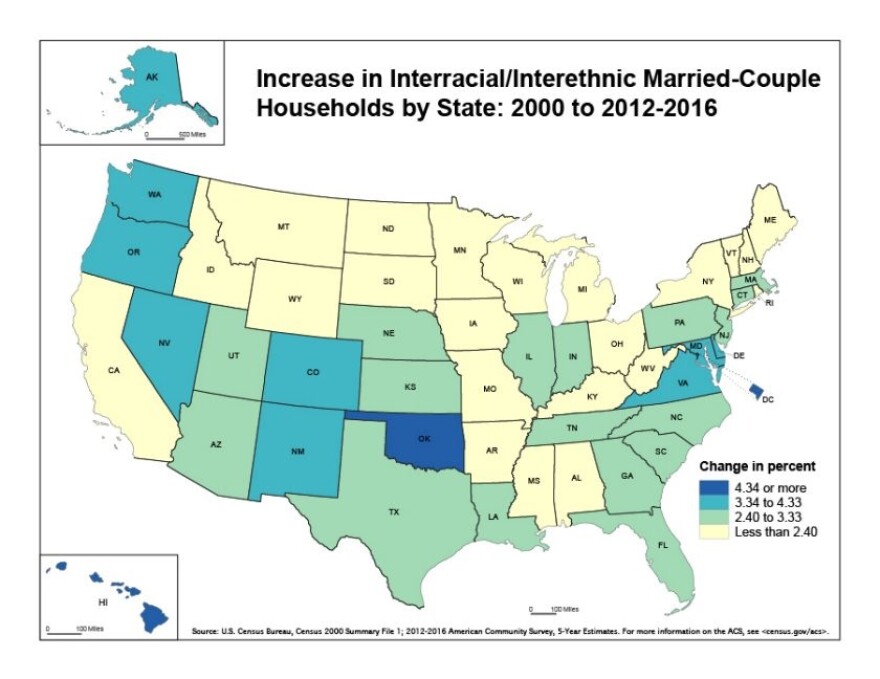The rate of interracial marriages in Missouri is increasing at a rate slower than other states, according to a recent U.S. Census Bureau report.
Results from the American Community Survey show the percentage of interracial married-couple households increased from 7.4 to 10.2 percent between 2000 and 2012-2016 nationwide.
The data for Missouri indicates that over the same time frame, the number of interracial couples increased less than 2.4 percentage points. Missouri is among 21 other states that saw an increase in that range.
“If you look at the report, the largest component of that increase came from whites marrying Hispanics,” said Ness Sandoval, Saint Louis University sociology professor. “Because Missouri has such a small Hispanic population, it didn’t see the bump in the increase that other states that saw an increase in the hispanic population; the same is true for Asians.”
Sandoval noted that other factors, including the recent NAACP travel advisory, could also have contributed to the lower number of racially diverse populations entering the state, reducing the percentage increase in interracial relationships. The NAACP travel advisory came after it found that African-Americans were 75 percent more likely to be stopped by law enforcement in Missouri.
“St. Louis does have a very strong black-white color line, and so I suspect it’s not going to be the type of change we’re seeing in Los Angeles or Miami, simply because of the history or racial segregation in our city,” Sandoval said.
Faster growth in some counties
Several Missouri counties did see a larger increase in interracial marriages when compared to the overall state. Boone, Audrain, Pettis, Clay, Taney and Sullivan counties saw the largest increase in interracial marriages, with a rate matching or exceeding 4.34 percentage points. St. Louis, St. Louis County and St. Charles County saw similar increased rates.
“These were counties that were typically urban,” Sandoval said. “Part of it is just proximity: When you have lots of diverse people living next to you, the probability of meeting somebody romantically increases.”
MORE: Detailed data about interracial marriage from the U.S. Census Bureau
Growth in the rate of interracial marriage in Missouri is a trend Sandoval believes will continue in the coming decades, even if it happens more slowly than other states. He noted that the increases will more than likely come from more ethnically diverse communities migrating to the state.
“One can imagine in 2025, as I anticipate, more minorities, especially Hispanics making Missouri their home and St. Louis their home, I would expect that that region and the state will no longer be in that bottom category, in terms of the lowest growth,” Sandoval said.

The data compiled by the census did rely on the self-reporting of racial identity, Sandoval noted. He said changing demographics could change how people self-identify as multiracial.
“If you live in Los Angeles, and you see a lot of children saying, 'It's OK to say that I’m Afro-Mex,' then the norm is, 'I can identify both,'” Sandoval said. “If you live in a city where there really is a color line, but you come from a multi-racial household, there may be the implication that you may feel social pressure to pick.”
Several states neighboring Missouri including Illinois, Nebraska, Kansas and Tennessee saw increases between 2.4 percent and 3.33 percent. Oklahoma saw the greatest increase: more than 4.34 percent.
Follow Chad on Twitter @iamcdavis.




